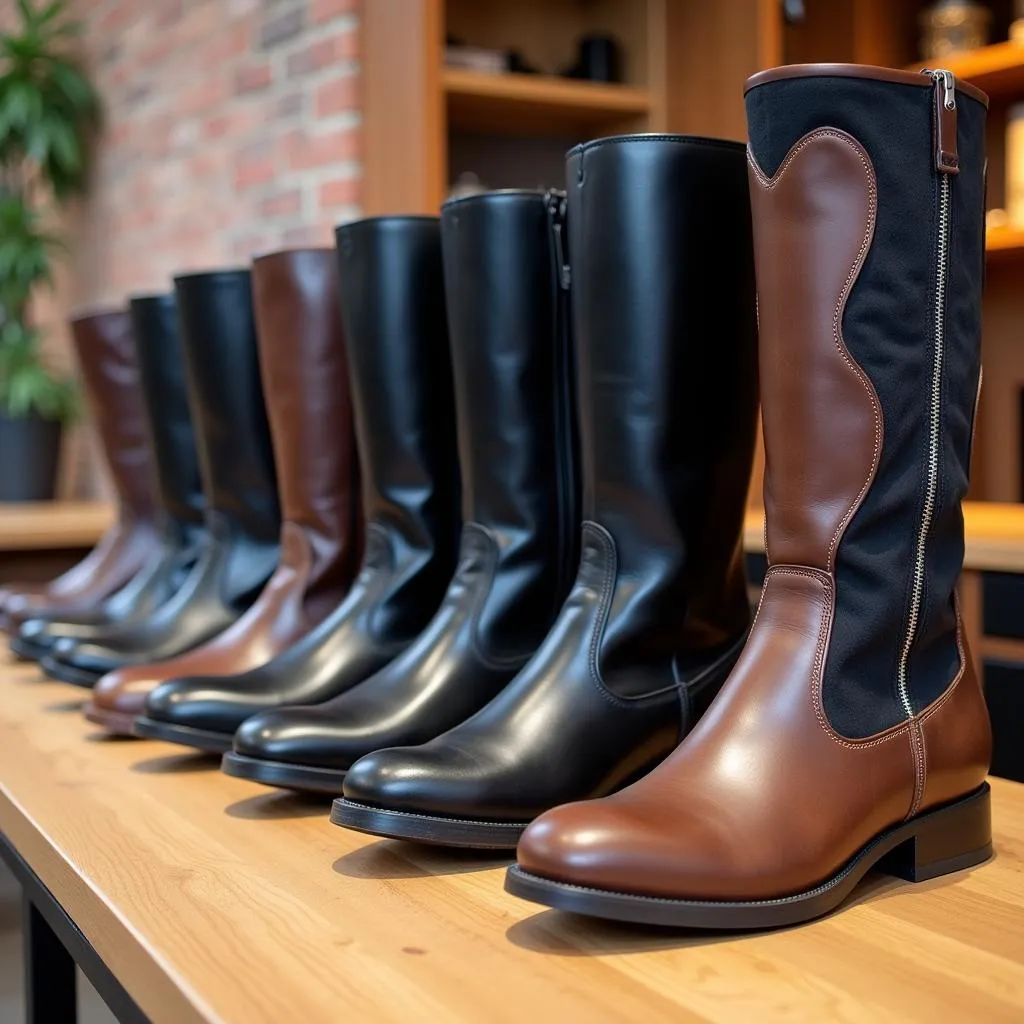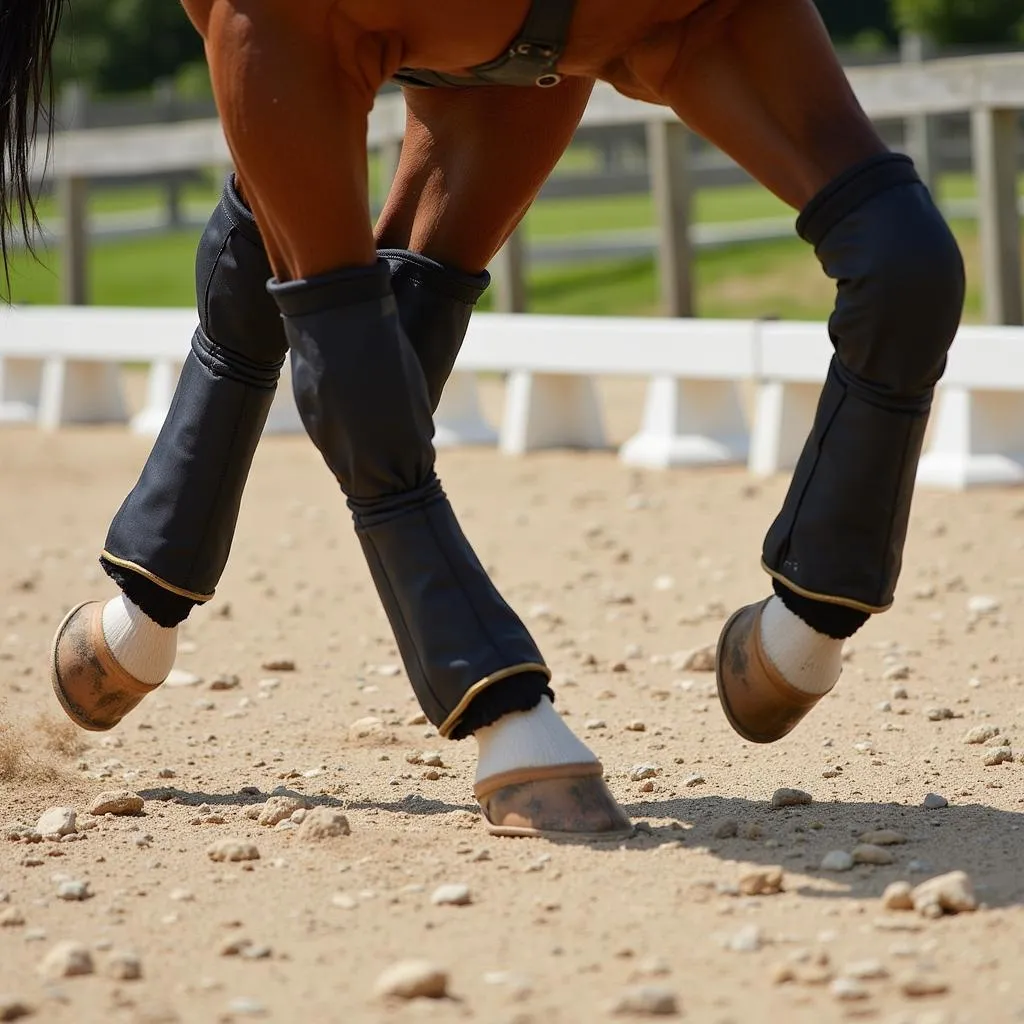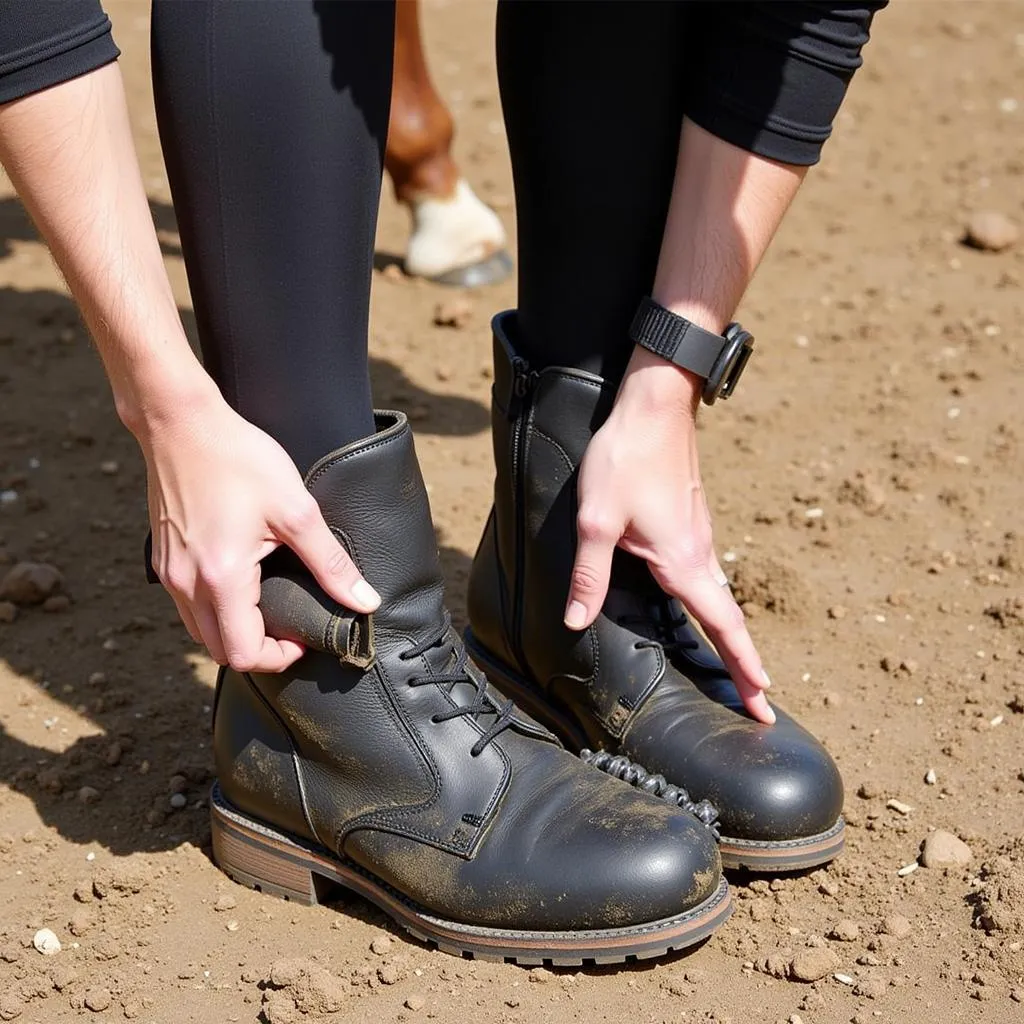Horse Power Boots are an essential piece of equipment for many horse owners, offering protection and support for these magnificent animals. Whether you’re a seasoned equestrian or a new horse owner, understanding the purpose, benefits, and different types of horse power boots is crucial for ensuring your equine companion’s well-being.
What are Horse Power Boots?
Horse power boots, sometimes referred to as leg boots or protective boots, are specifically designed to safeguard a horse’s legs from injury during riding, training, or turnout. They act as a barrier against impacts, abrasions, and interference, promoting optimal performance and preventing potential lameness.
 Various types of horse power boots displayed on a table
Various types of horse power boots displayed on a table
Why are Horse Power Boots Important?
Horses, especially those involved in rigorous activities like jumping, racing, or even trail riding, are susceptible to leg injuries. Their legs endure tremendous stress, making them vulnerable to cuts, knocks, and strains. Horse power boots provide that extra layer of protection, reducing the risk of these injuries and promoting faster healing if they occur.
Types of Horse Power Boots
Choosing the right type of horse power boot depends on the horse’s activity level and the specific area needing protection. Some common types include:
1. Polo Wraps
Often used for support and protection during training, polo wraps are made from fleece or other soft materials and are wrapped around the horse’s lower legs. They offer light support and compression, making them ideal for preventing tendon and ligament injuries.
2. Splint Boots
As the name suggests, splint boots are designed to protect the horse’s splint bones, located on the inside of the cannon bone, from impact and injury. They are commonly used during activities that involve lateral movement, such as jumping and reining.
3. Open Front Boots
These boots leave the front of the cannon bone uncovered, allowing for greater freedom of movement while still providing protection to the tendons and fetlocks. They are suitable for a variety of disciplines, including dressage and show jumping.
 A horse wearing open front boots during dressage training
A horse wearing open front boots during dressage training
4. Bell Boots
Worn around the pastern area, bell boots protect the horse’s coronary band and heels from injury, particularly from overreaching or interfering. They are often used during turnout, lunging, and riding.
Choosing the Right Fit
Proper fit is crucial for the effectiveness of horse power boots. Ill-fitting boots can cause discomfort, rub sores, and even worsen existing injuries. Always consult the manufacturer’s sizing chart and consider factors such as the horse’s breed, age, and intended use.
Caring for Your Horse Power Boots
Regular cleaning and maintenance will extend the lifespan of your horse power boots. Remove dirt and debris after each use, and allow them to air dry completely. Inspect the boots regularly for any signs of wear and tear, replacing them when necessary.
 A horse owner cleaning mud off a pair of horse power boots
A horse owner cleaning mud off a pair of horse power boots
Investing in Your Horse’s Well-being
Horse power boots are an investment in your equine partner’s health and performance. By providing the right protection and support, you can help keep your horse sound, happy, and performing at their best.
Remember, consulting with your veterinarian or a qualified equine professional is always recommended to determine the most suitable type of horse power boots for your horse’s individual needs and activity level.
FAQs about Horse Power Boots
1. When should I use horse power boots?
It’s generally recommended to use horse power boots during any activity where there’s a risk of leg injury, such as riding, training, turnout, or trailering.
2. Can I leave horse power boots on overnight?
It’s not advisable to leave horse power boots on overnight. Prolonged use can restrict blood flow and cause discomfort.
3. How often should I replace horse power boots?
Replace horse power boots when they show signs of wear and tear, such as cracks, tears, or loss of padding.
4. What’s the difference between front and hind boots?
Front boots typically offer more protection for the tendons and fetlocks, while hind boots focus on safeguarding the hocks and pasterns.
5. Are horse power boots necessary for all horses?
The necessity of horse power boots depends on the horse’s activity level, conformation, and any pre-existing conditions. Consult with your veterinarian for personalized advice.
Need Help Finding the Perfect Horse Power Boots?
Contact us at Phone Number: 0772127271, Email: [email protected] Or visit us at: QGM2+WX2, Vị Trung, Vị Thuỷ, Hậu Giang, Việt Nam. Our team is available 24/7 to assist you with expert advice and personalized recommendations.
Explore our wide selection of horse show name essentials and discover stunning pieces of metal horse art to adorn your stable or home.